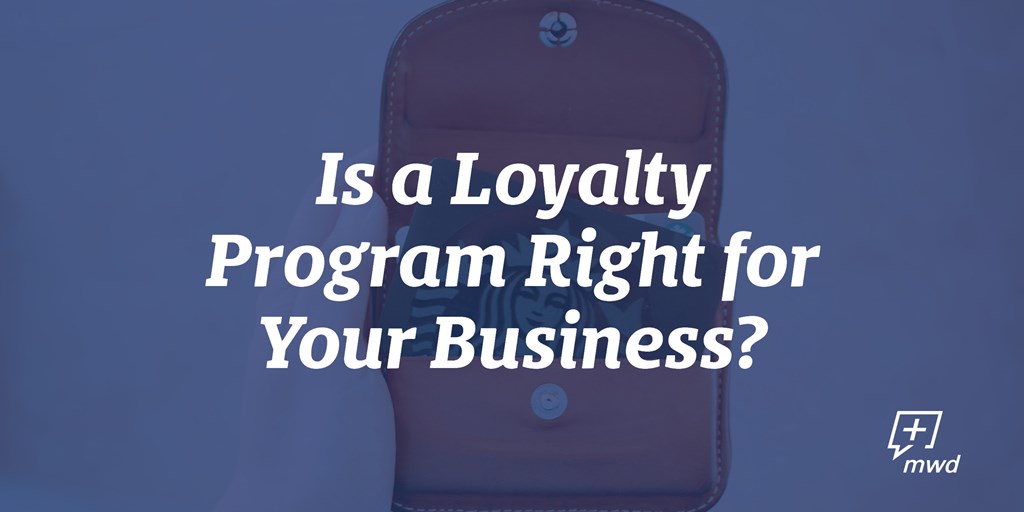
If you were to grab your keys right now, what would you see? House and car keys most likely, but perhaps a few loyalty cards as well. Whether it’s GNC, Walgreens, or even one for your local gym, loyalty programs are becoming stronger and more successful than ever. Once a loyalty or reward program is set up, it’s fairly easy to maintain as long as you have the right tools in place. Getting to that point, however, can be the biggest hurdle.
Loyalty programs come in many varieties, but the ones most people usually think of are for large corporations, such as Petco, CVS or even Amazon Prime. Sure, these companies have more money to spend when it comes to a loyalty program – they can build a great app, send out attractive emails and offer incentives that may have more value than many small businesses could afford. So, as a small business you should completely write off rewards programs, right? Wrong! Rewards programs come in all shapes and sizes.
Why Do Loyalty Programs Work?
To put it plainly, loyalty programs work because they feed our need for instant gratification. By saving up points towards a purchase, for example, consumers are able to feel more involved in their shopping experiences and reap the benefits of staying loyal to a particular company. Other loyalty programs may offer rewards that take a long time to acquire (such as hotel stays or free flights), but they succeed in the short-term by still offering enough free perks to keep the customer involved.
Ultimately, customers simply want some kind of validation that their loyalty is worth it, and in a digital world where achievements are king, loyalty programs fulfill that gnawing desire to work towards some kind of reward. The proof is in the data, too: according to a Cherry London study, 69% of 1,000 adults surveyed said rewards make them more likely to shop with a brand.
The Benefits
Aside from retaining customers, there are plenty of additional benefits, including:
Market research: When loyalty programs are properly in place, it is easier to determine which incentives are working and which ones aren’t. This insight can help fuel promotions and advertising across the board, allowing businesses to keep incentives that work and ditch ones that don’t. In some instances, loyalty programs may even help define customers’ shopping habits and preferences, which may improve segmentation for direct mail and email campaigns.
A reputation boost: Customers love nothing more than discussing perks! When a good rewards system is put into place, customers quickly begin to share their satisfaction with others. Happy customers and the positive word-of-mouth that stems from them can easily boost a company’s reputation.
Increase sales: Having a rewards system allows customers to potentially purchase more than they normally would. As long as the rewards program is aligned to the customers’ interests, it becomes easier to introduce new promotions and perks that may encourage a customer to purchase something out of the blue. These sales could be part of special members-only deals, abandoned cart reminders, or even opportunities to earn more points than normal towards a reward.
Improved customer service: Having customers connected to a loyalty program makes it simpler to communicate. Product recalls, for example, can be traced back to customers in the system. Notifications of expiring rewards, as well as rebates that may have been unknown to the customer, may also be communicated. By enrolling customers in a loyalty program and connecting all transactions to their membership ID, a business is able to boost customer service, reduce confusion, and ultimately provide a positive customer service experience.
Tips on Getting Started
Implementing a loyalty program isn’t as expensive as one may think. In fact, it’s seven times less expensive to keep an existing customer than to gain a new one. There are plenty of options to choose from, ranging anywhere from an app to a membership card, to a simple punch card, and they all serve the same purpose: to encourage customers to keep coming back.
The key starting point for implementing a loyalty program (or any program, for that matter) is having good data. A clean, updated list is crucial for initially promoting the loyalty program to current customers. Once the reward program is in place, it is equally as important to consistently collect and enter information into a system. At the end of the day, if a business is not keeping clean, updated information on loyalty program participants, it is not reaping the benefits of vital market research.
Continuing to encourage customers to be engaged is just as important, and direct mail offers an easy way to do so. Sending out birthday rewards, information about new products, new store openings, or holiday promotions can be just as effective, if not more, than sending out email communications.
Ultimately, a loyalty program is flexible, relatively inexpensive to set up, and keeps customers coming back for more. When data is cleaned and updated frequently, it provides marketing insights that are invaluable for making key marketing decisions and understanding customer demographics.
The combined print and data services offered at Midwest Direct have allowed many businesses to successfully implement and maintain their loyalty programs. Contact us to get started!

